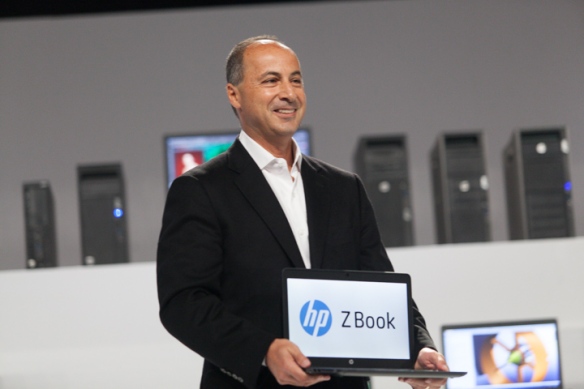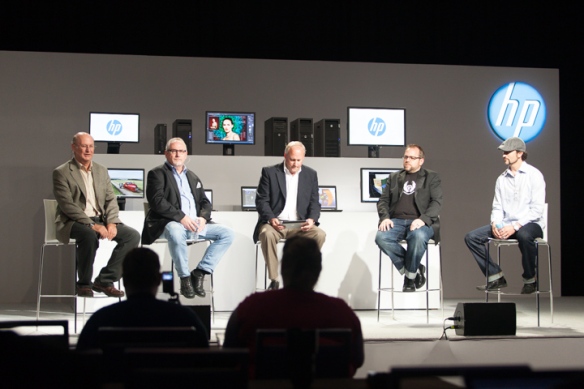Yesterday HP announced Thunderbolt across both their Mobile and Desktop Workstations lines, launching a truly innovative initiative in the PC world. No longer will PC users be relegated to running Windows on a Mac just to be able to use the power and speed of Thunderbolt, nor will they be limited to only a couple of DIY motherboards and the corresponding issues of drivers and compatibility just to be able to have the power that Thunderbolt brings to the table.
In discussions with HP since NAB about the how and why of Thunderbolt and what it means for the industry,not just about projects working with Onset Data or the high end workflows that are the majority of projects that I work on, but that Thunderbolt also brings a host of other advantages beyond the simplicity of the connector.
Thunderbolt brings an unrivaled level of performance in a single cable, I know of no other protocol currently in use that can allow users the ability to move data in the same manner as Thunderbolt does. It is not just that, Thunderbolt can also extend the PCIe buss outside your laptop to allow users to easily access multiple kinds of media.
I have Thunderbolt adopters to eSata, Firewire, Ethernet adaptors already, but I can also access Video I/O devices from Aja, BlackmagicDesign and Matrox with SMPTE calibrated output all the way up to 4K and soon beyond. I can bridge my Thunderbolt connection to Fibre or GigE infrastructures for Enterprise users, even extend my performance with a RED Rocket or Io-Fusion for the ultimate in mobile performance.
I don’t care that it’s Xx times faster than USB, what I does impress me is that I can move data to one of my Promise Pegasus arrays at over 850MBps with the 1st Gen, 10Gbps version using a 6 drive array in Raid 6, it also means that the 2nd Gen, 20Gbps version announced by HP and Apple means that throughput on the next level could reach as fast as 1.6 GBps on a laptop.
1.6 GBps means playback of uncompressed 4K content, but it also means that we no longer have to suffer the data rates we accepted from Firewire 800 which transfers data at roughly 1 minute of transfer time per gigabyte of data. Time is money in modern production and post, no longer are data wranglers woefully waiting hours to move the content from a single days shoot.
Thunderbolt has allowed me to be more productive in the ever tightening marketplace. I am consistently moving data at 4 to 5 times faster than my competition. I am currently working in a multi-cam production on a TV series shooting in Chicago, where I am transferring 32 GB Arri Alexa media in an average time of 7 minutes per card to 2 separate volumes in one of G-Technology’s latest offerings the G-Dock EV. The speed of transfer has totally changed the way I work.
HP’s Thunderbolt announcement will certainly shake up the marketplace. HP brings a level of authority and backs that with a universally recognizable name in the computing world. The fact that their products across the board will offer Thunderbolt connectivity is nothing short of evolutionary, no other manufacture will be shipping Workstation level laptops as well as a fully user customizable, Thunderbolt enabled Desktop Workstation that can move data at these heretofore unheard of rates on the consumer level. With the ability to share Thunderbolt enabled storage in the office or on location.
Whether you shoot larger numbers of photographs or video, work on a DSLR or in 6K on a RED camera, Thunderbolt offers you something you have not had previously, the power and performance only seen on extremely expensive, top of the line Workstations. The only difference now is that that level of performance is now available to professionals and consumers at a price that is nothing less than astonishing when you consider what that same throughput was just 5 years ago.







You must be logged in to post a comment.